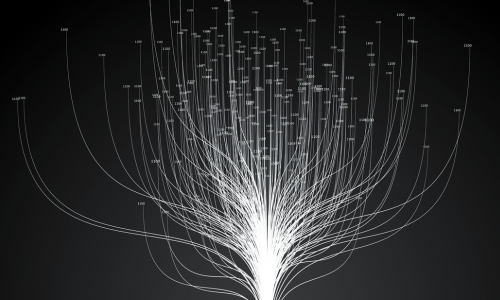
DLP vs DSPM: What is the Difference?
Author: Bill Balfour
Release Date: 25/07/2025
I was on the way to the airport when the email came in from the Marketing team asking me to write a blog about the difference between DLP and DSPM. There I was, stood at the dreaded security line, shoes off, pockets empty, all liquids and electronics in the tray. Like most of us blood pressure through the roof, then getting re-dressed then off to the local refreshment area for a beverage to calm down. Then it occurred…
Imagine you’re running a busy airport.
Planes are coming and going. Individuals are checking-in, luggage is going through conveyor belts and security is sweeping everything in their way.
Now look at it this way:
1) Clearly, security is trying to catch an individual attempting to smuggle something through, in their carry-on
2) The airport ground staff, once bags pass through check-in, want to know where every bag checked-in is, who it belongs to, which flight it is on and whether it even has a right to be there?
That, simplistically, is the difference between DLP and DSPM.
Let's take this a step further.
What Is DLP?
DLP stands for Data Loss Prevention - and it's been around for what seems like forever.
Think of DLP as security at the airport screening your carry-on bags. They're there to keep things off the aircraft that shouldn't be onboard.
DLP software scans e-mails, USB drives, clipboard content and files in transit to keep sensitive information (such as credit card numbers, medical information or sensitive business material) from reaching where it should not.
It's reactive.
It's rule-based (just like airport security).
It's really saying: "Hey, if someone tries to email out a list of customer data, block it - or at least flag it."
That was a good enough approach for a while.
Today's businesses are not merely airports - they are globally located, with remote staff and systems, distributed data hubs with logistic centres, cloud repositories. These all come with many ingress and egress points.
Data is no longer just in email or on computers - it's in SaaS apps, APIs, shadow IT, cloud buckets, AI models and much more.
Which brings us on to…
What Is DSPM?
DSPM stands for Data Security Posture Management. It's newer, smarter and much more contextual.
Instead of just watching the exit doors like at the security clearance area, DSPM is more like having a real-time map of all your airport and everyone's bags - including stranded luggage at the arrival carousels or unattended bags in the business class lounges.
It gives responses to questions like:
• Where is all your sensitive data?
• Who should/does have access to it?
• Is it adequately secured or exposed?
• Does it violate your policies or compliance requirements?
DSPM isn't reactive; it is proactive and prevents the risks from being an incident in the first place.
Another Analogy: DLP v DSPM in a Coffee Shop
Remember I needed that beverage to calm down after I went through security…
Suppose you own a coffee shop in the departures area.
DLP is like the server, double checking people have paid before they walk out with their drink. Prevents things from walking out of the door unpaid.
DSPM is like the manager double checking the entire supply chain, ensuring the espresso machine has power, enough coffee beans in the grinder, ensuring trained staff only work the till or ensuring that the milk has not gone out of date.
One solution looks at the “point in time” where a problem would occur.
The other reads the entire environment so problems don't occur in the first place.
How They Work Technically (but light touch)
DLP relies on rules, regex (search pattern language), data classification labelling and file scanning.
It's typically implemented as part of:
• Email security
• Endpoint protection
• Network monitoring
But the pain? It creates a tremendous number of false positives and user friction. Users are blocked trying to do legitimate work and IT teams are overwhelmed by alarms they don't always have context for.
DSPM, on the other hand, connects to cloud platforms, SaaS applications and data stores. It utilises discovery + context:
• Finds sensitive data in places you didn’t even know you had
• Maps access permissions
• Highlights where your security posture is weak
It's not a gatekeeper like DLP, consider it more of a GPS for your data risk, pointing you in the direction where you're most vulnerable.
Why DLP Alone Isn't Enough Anymore
Yes – and in mature environments, it should be.
Think of it this way:
• DSPM is your threat sensor. It scans for threats, misconfig and misplaced assets.
• DLP is your firewall or security gateway. It stops data exfiltration in real time.
When DSPM notifies you of an S3 bucket left open with sensitive data, you turn up the access and tune your DLP to watch that traffic.
Short version: DSPM sees the risk, DLP stops it.
Which One Do You Need?
Why not both? But if I had to pick one:
Choose DLP if:
• You’re in a heavily regulated environment (e.g., finance, healthcare)
• You’re focused on blocking risky behaviour in real-time
• You have well-defined data flows and relatively simple infrastructure
Choose DSPM if:
• You use multiple SaaS/cloud environments
• You’re unsure where all your sensitive data lives
• You want proactive insight rather than reactive control
Simply put, if you're growing rapidly or already living in the cloud - you're going to need DSPM first.
DLP is still required, but second-line control after having checked your environment.
Final Thoughts
DLP is your trusty old guard dog - vigilant, deadly, but a bit outdated.
You can't protect what you don't know you have. That's where DSPM gets its seat at the table.

